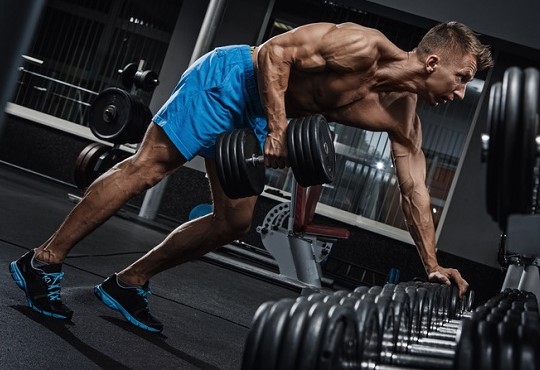Freak Fitness

As a strongman competitor, Darren has pulled 50,000 lb trucks and dead lifted 805 lbs. As a competitive bodybuilder, he has won Provincial Super-heavyweight & Overall titles. As President & CEO of FREAK Fitness, he has coached his clients to hundreds of Novice, Provincial/State, National, and IFBB Pro titles. Having been involved in the sport of bodybuilding for over 20 years, Darren has his finger on the pulse of the local and international bodybuilding scenes, and will be keeping you informed through his column, “Freak Fitness."

The Benefits of Unilateral Training
Many exercises that are done with both arms or legs simultaneously can also be done one side at a time, and that can offer special advantages
Any number of small, seemingly inconsequential decisions you make over the course of your workout may take a nanosecond of your thought processes but are in fact worthy of more serious discussion. One such decision might be whether to perform a given exercise with both arms (or legs) or just one.
 Most likely, you choose exercises you’ve always done and are familiar with. If you do standing cable curls from the lower-pulley position, you’ve most likely got a default, go-to movement that’s bilateral in nature without giving much thought to single-arm variations. Regardless of your goals, I feel all bodybuilders can benefit greatly from including unilateral training in their training programs. Unilateral simply refers to training one side or one limb of the body at a time. Examples include single-arm dumbbell lateral raises, single-arm overhead kettlebell presses, and single-leg leg presses.
Most likely, you choose exercises you’ve always done and are familiar with. If you do standing cable curls from the lower-pulley position, you’ve most likely got a default, go-to movement that’s bilateral in nature without giving much thought to single-arm variations. Regardless of your goals, I feel all bodybuilders can benefit greatly from including unilateral training in their training programs. Unilateral simply refers to training one side or one limb of the body at a time. Examples include single-arm dumbbell lateral raises, single-arm overhead kettlebell presses, and single-leg leg presses.
Most likely, your training program centers around bilateral barbell movements such as squats, deadlifts, presses, and rows—as it should. But by skipping unilateral training, hard-working athletes like you are missing out on the many benefits this training method can provide.
THE BENEFITS OF UNILATERAL TRAINING
• You can train the target muscle in an enhanced range of motion. Compared to the bilateral barbell row, for example, the single-arm dumbbell row allows you to get a deeper stretch in the working lat without compromising correct spinal position. With a better stretch, you’ll be able to recruit more muscle fibres and achieve a stronger contraction.
• You have a better mind-muscle connection. If you choose a one-arm curl—for example, a concentration curl—you get better focus on each side rather than splitting your attention between both arms. That is, you can take each side to muscle failure rather than stopping a set when one of the two sides can no longer complete a rep.
•  You can correct muscle-symmetry imbalances. It’s not uncommon for you to have a stronger—or even larger—side, whether it’s with shoulders, arms, or legs. If you have one quad that’s bigger or stronger than the other, then a few extra sets of unilateral or single-leg leg extensions at the end of your leg workout will, over time, help you bring up the lagging side on par with the other.
You can correct muscle-symmetry imbalances. It’s not uncommon for you to have a stronger—or even larger—side, whether it’s with shoulders, arms, or legs. If you have one quad that’s bigger or stronger than the other, then a few extra sets of unilateral or single-leg leg extensions at the end of your leg workout will, over time, help you bring up the lagging side on par with the other.
THE DOWNSIDES
• There’s really only one: You’ll spend more time in the gym. When you do elect to perform the unilateral version of an exercise, you nearly double the time it takes you to complete the desired number of sets for that exercise. (In fact, it’s not double because when one side is going, the other is resting, meaning your true rest period needn’t be as long overall.) This is something to consider if time is at a premium for you. In this case, I recommend you keep unilateral training for just weaker body parts or for workouts that you do on the weekend when you have more time to train.

By including unilateral training into your current training program, you’ll quickly see that the extra time it takes to train one side at a time is a small price to pay for the great benefits. Over time, you’ll want to include both styles of training in your program for variety and optimal overall development of size and strength. I know it may be a one-sided argument, but you’ll thank me soon enough!
 Get articles like this one delivered to your email each month by signing up for Muscle Insider’s mailing list. Just click here.
Get articles like this one delivered to your email each month by signing up for Muscle Insider’s mailing list. Just click here.

